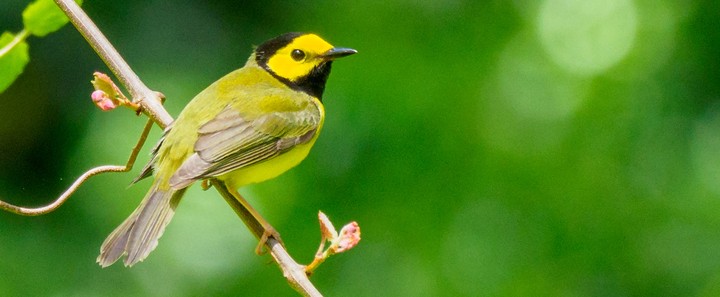Full annual cycle models

Historically, efforts to identify limiting factors for migratory species have been hindered by the scale of annual migration movements, missing information about the geographic linkages between breeding and non-breeding populations (i.e., migratory connectivity), and the lack of analytical methods for linking population dynamics to demographic processes operating across the entire annual cycle. A major theme of my research focuses on application technological advances and developing ‘full-annual-cycle’ population models to overcome these challenges.
One of the major challenges to understanding limiting factors of migratory birds has long been the scientists have not known where specific populations go after they leave the breeding or wintering grounds. Information about migration routes, winter distribution, and migration phenology is currently unavailable for many species because, until recently, over 40% of migratory bird species were too small track using even the most advanced satellite tags. A major focus of my research has been using new technologies, including stable isotopes (Rushing et al. 2014 Ecol Apps; Rushing et al. 2017 Ecol & Evol) and miniaturized tracking tags, to better understand the migratory connectivity of small songbirds (Cohen et al. 2018 MEE). Current work on this topic includes two projects that are using light-level geolocators to determine the migratory connectivity and non-breeding distribution of Passerina buntings.
In addition to quantifying patterns of migratory connectivity, much of my research focuses on developing ‘full-annual-cycle’ models to link population dynamics of migratory birds to demographic and environmental processes occurring through the year. Full-annual-cycle models include a broad range of modeling frameworks (Hosttetler et al. 2015) and I regularly use several of these methods in my research, including Bayesian hierarchical models and integrated population models (IPMs). Some of my work on full-annual-cycle models has focused on exploring how breeding vs. winter habitat contribute to spatial variation in population trajectories in Wood Thrush (Rushing et al. 2016b Proc B), estimating seasonal survival rates by integrating breeding and winter capture-recapture data (Rushing 2019 Ecol & Evol), and using IPMs to link changes in Wood Thrush breeding abundance to reproduction, immigration and seasonal survival (Rushing et al. 2017b Ecology).
Given the importance of full-annual-cycle models for advancing our understanding of the ecology of migratory birds, continued work on developing and expanding these frameworks is the central aim of my current research. Ongoing projects on this topic include: improving methods to estimate fall and spring migration survival and their relation to climate, habitat, and density; developing population viability analyses that can used to predict the effects of breeding vs. non-breeding management options; and developing a theoretical framework for predicting when and why populations should be breeding vs. non-breeding limited. In the coming years, our projects on migratory connectivity and variation in life-history strategies of Passerina buntings will produce data for testing these theoretical predictions. Ultimately, it is my hope that these efforts can be used to improve management and conservation outcomes for the many species of declining migratory birds across the globe.
Relevant publications (pdf available upon request):
Rushing, C. S. 2019. Estimability of migration survival rates from integrated breeding and winter capture–recapture data. Ecology and Evolution, 9(2), 849-858.
Rushing, C.S., Hostetler, J.A., Sillett, T.S., Marra, P.P., Rotenberg, J.A. and Ryder, T.B., 2017. Spatial and temporal drivers of avian population dynamics across the annual cycle. Ecology, 98(11), 2837-2850.
Rushing, C.S., Ryder, T.B. and Marra, P.P., 2016. Quantifying drivers of population dynamics for a migratory bird throughout the annual cycle. Proc. R. Soc. B, 283(1823), 20152846.
Rushing, C.S., Ryder, T.B., Saracco, J.F. and Marra, P.P., 2014. Assessing migratory connectivity for a long‐distance migratory bird using multiple intrinsic markers. Ecological Applications, 24(3), 445-456.
Cohen, E.B., Hostetler, J.A., Hallworth, M.T., Rushing, C.S., Sillett, T.S. and Marra, P.P., 2018. Quantifying the strength of migratory connectivity. Methods in Ecology and Evolution, 9(3), 513-524.
Cohen, E.B., Rushing, C.R., Moore, F.R., Hallworth, M.T., Hostetler, J.A., Ramirez, M.G. and Marra, P.P., 2018. The strength of migratory connectivity for birds en route to breeding through the Gulf of Mexico. Ecography.